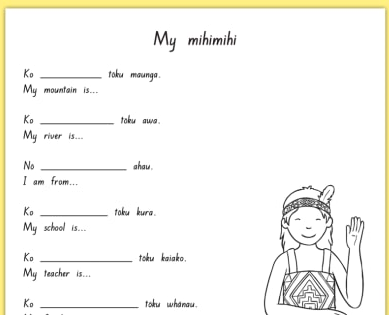3 February - 9 February
Section outline
-
Kia ora...students and huge welcome to Coast whanua. My name is Mrs Ulika Singh and am you Global Studies teacher for this year.I hope you had a wonderful summer break and ready to venture with your learning at school.Our learning context is
He waka eke noa - strength of group enhances individuality / the most important thing in life is the connections we make with others. With this, we will examine who we are are/ where we come from/ the values we share that connect us to each other to build relations as well as identify skills we have or can learn to make new connections in our environment.


Achievement Objectives:
L3 Understand how the movement of people affects cultural diversity and interaction in New Zealand.L4 Understand how people pass on and sustain culture and heritage for different reasons and that this has consequences for people.
Success Criteria: I can/have...
- Understood our learning context by making links to ourselves/ friends and community
- Understood my immigration story and pepeha by creating a visual that describes me
Activities:
1) Let us brains storm our learning context and come up with ideas that link with us and our community eg: We are all in this together as it is our first day at school? Discus our excitement/ fears/ expectations and values we share!
2) Write down what are you most important values and skills.Let us also examine the meaning of ket words like respect/ religion/ culture/ traditions/ heritage/ immigration/ changes and adaptation
3)Reflect on your immigration story you had researched and discussed in week one. Did you or you parents immigrate from another country? Why did you leave? What re the various values and practices of of culture you were exposed too from your birth country or parents birth country? Is it different or similar to the values of living in New Zealand.
4) Think of all the values you consider as an import part of who you are are that has been shown and taught to you by your family, community and school. Using the information draw a plan of the different symbols, images, colours, flags, that make up your unique identity.
5) Think of a way you would like to showcase your cultural identity . For an example, design a digital papehe from your culture tat show your cultural side vs your Kiwiana side. Or perhaps it is integration of both your culture and new adopted Kiwi culture embodied as one. May be you only share one side of a culture than the other.
4) This can be created in various ways e.g.: The face mask or a bandana. However, I will allow your to express your cultural identity using any model or visual you like.Watch this for support:
5) Once you have completed this, share your pepeha with the class.
6) See images on the white board n cultural expressions: e.g.: flags, music instruments, cultural food, important traditional clothing, religious symbols, clots, phrases, dance form, values: respect, compassion, care, support and understanding.
Homework
Resources:
Mihi - introductions, Māori ki Te Whare Wānanga o Ōtākou ...
Sep 14, 2018 - Uploaded by Pepeha New ZealandPepeha is a way of introducing yourself in Māori. It tells a story of the places and people youPersonal beliefs, values, attitudes and behaviour | IAA
https://www.iaa.govt.nz › ... › Personal beliefs, values, attitudes and behaviourCultural identity Facts for Kids - Kiddle encyclop
EXPLORE / TŪHURA learning intentions:
- We are EXPLORING...to investigate students personalised immigration story and the vocabulary associated with this idea
- We are EXPLORING...to research the Treaty of Waitangi and its significance for us today in NZ
- We are EXPLORING...to discover the skills required to camp and research information on Camp Adair
